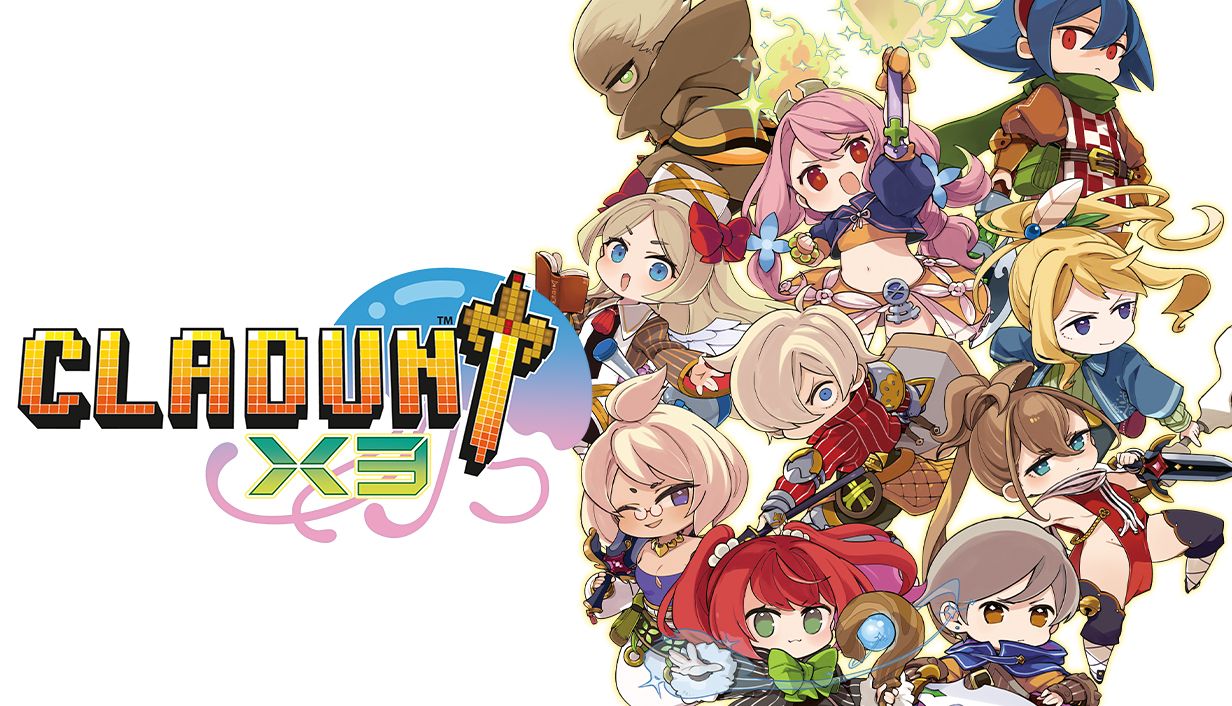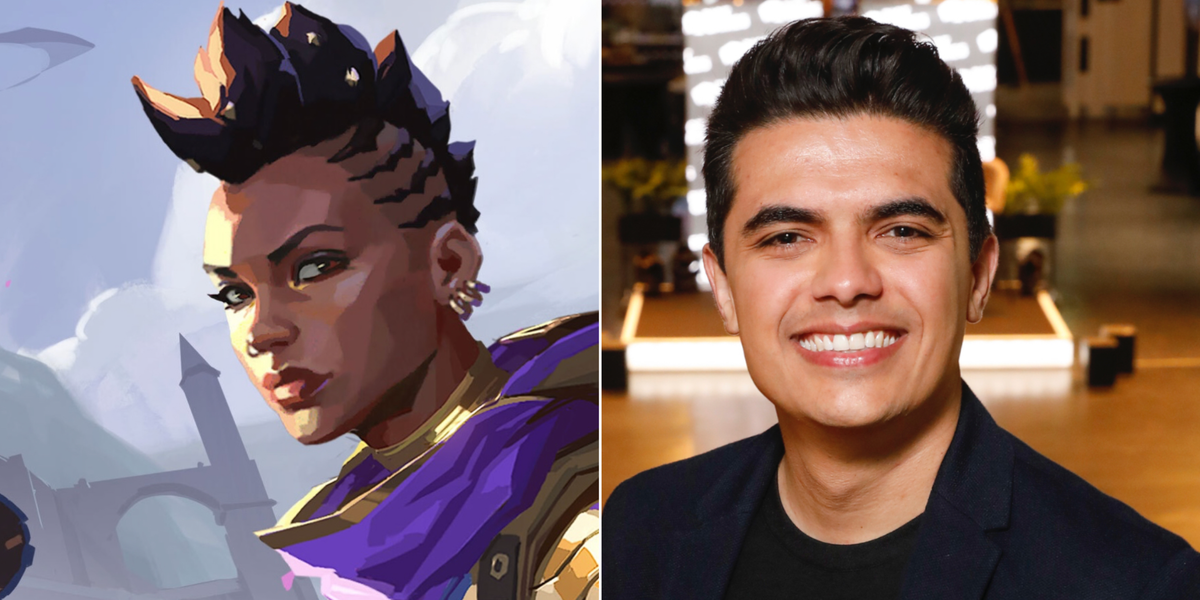The PlayStation Portable was an iconic home for niche RPGs, cementing the likes of Nippon Ichi Software as small but permanent fixtures in video games. Cladun started there—a series that combined retro gaming aesthetics with the enduring features of contemporary premium handheld gaming.
Cladun struggled a bit to survive the Vita’s relative floundering, but with the Nintendo Switch (and Switch 2), now’s the perfect time for a comeback. Cladun X3 is a weird one for a few reasons, but in a world full of dungeon-crawling RPGs, there isn’t much else like it. Am I a baddie? Oh well.
### A Unique Death Game
Cladun X3 is about a death game, but not in the same way something like *Danganronpa* is. Instead, you play as an immortal jellyfish person running a mysterious island called Arcanus Cella, where villains have been summoned from across time and space. The idea seems to be forcing them to beat each other up, thus keeping them away from being menaces to society.
You’re one such villain, apparently waking up on the island with no memories from before. Still, while you’re here, you might as well power up and participate in the violence anyway—you only have so many options.
### Endless Dungeons to Conquer
To power up, you’ll be entering dungeons. And not just a few—dozens and dozens of dungeons. There are story dungeons, random dungeons, map dungeons, and more. The basic gameplay loop is fun and simple, designed for fast and furious, bite-sized sessions.
Cladun’s dungeons last only a few seconds at a time, with the goal being to run through as fast as you can, blasting through enemies and avoiding traps in search of the exit. You can be more thorough to find treasures and hidden goodies, but you’re generally discouraged from doing so unless you need to grind.
### Complex Progression Systems
Grinding is a key part of the progression. Cladun’s leveling system isn’t just about gaining experience and leveling up. While leveling exists, the bigger piece is the Magic Circles system—a sort of progression map that has you assigning sub-characters to tracks fueled by mana points. On these tracks, you place stat-boosting artifacts that lead to your main character.
If that sounds complicated, it is! The sub-characters serve as shields for your main character, taking damage before you do. But if they get knocked out, you lose the benefits from their lanes on your equipped Magic Circle, potentially derailing your offensive or defensive abilities for the rest of the dungeon.
As you play, you gain more mana, stronger artifacts, and new Magic Circles to experiment with. Managing all this can be a real headache. The gains also feel incremental—one point of ATK might cost three mana, with two points costing seven. Mana typically grows at a slow rate (one or two per level), which is offset only when you unlock more complicated Magic Circles with more character slots.
Choosing a new Circle resets your artifact placement, meaning you’ll spend lots of time poking through menus, doing mana math, and desperately trying to optimize your build.
### Increasing Difficulty and Frustrations
Meanwhile, enemies gain larger HP pools and hit harder as the story progresses. Unless you get lucky with item drops, there’s only so much your equipment can do beyond your stats. At some point, taking a few hits (your defense is halved when you run, by the way) will knock out a sub-character, nullifying your gains in seconds.
This can be incredibly frustrating, especially as later dungeons fill the screen with enemies wielding massive area-of-effect attacks. Combat slows down significantly as you’re forced to play more cautiously while enemies get faster, stronger, and more numerous.
Hopping into “ran-geons” and “map-geons” should serve as grind-friendly bonus dungeons, with randomized elements appearing early. However, escapes are random—if no exit appears, you must either run until one spawns, give up, or die.
Dying comes with severe penalties, stripping away your items and most of the experience and money you found. As a result, it’s often more productive to replay recently cleared story dungeons repeatedly to level up. Yuck!
### Make Cladun Your Own
Grinding can be a bummer, but Cladun X3 offers an aspect that might fly under most players’ radar: deep customization. The main and sub-characters aren’t defined story personas but custom recruits, Dragon Quest 3 style.
But the customization here is utterly unhinged. Nearly every element of Cladun X3 is customizable. You can design all your own sprites, either from scratch or using existing templates as starting points—including equipment.
You can also customize flavor text and design your own hub map. There’s even a fully fledged music composition tool included, allowing you to write and assign your own background music tracks across nearly the entire game. It’s absurd.
If you’re a creative type who just wants to vibe out and grind levels at your leisure, you can do so in a simple space designed for that kind of dopamine-producing loop. You essentially design your own little retro RPG world. It feels like an Animal Crossing for RPG enthusiasts, stopping just short of being a new kind of RPG Maker-like experience.
If this style doesn’t suit you, you can ignore the customization entirely and still enjoy the story without missing anything.
### Final Thoughts
If Cladun X3 had been tuned a little differently, it could have been my perfect time-killing grindfest. The idea of picking characters, customizing them, and diving into bite-sized dungeons for numbers-driven dopamine has “good time” written all over it.
However, having to tinker extensively with the Magic Circles for gains that feel disproportionately small compared to the time invested, while being quickly outpaced by the game’s escalating difficulty, makes the experience feel painfully slow. I enjoy grinding to a reasonable extent, but Cladun X3 demands too much.
I respect the wild level of creativity its customization tools provide, but the ways the game demands time in exchange for flimsy rewards cause it to struggle in maintaining my attention.
—
**Cladun X3** is available on September 26, 2025, for Nintendo Switch, PC, and PlayStation 4 and 5. A Switch code was provided by the publisher for review.
https://www.shacknews.com/article/146007/cladun-x3-review-score



